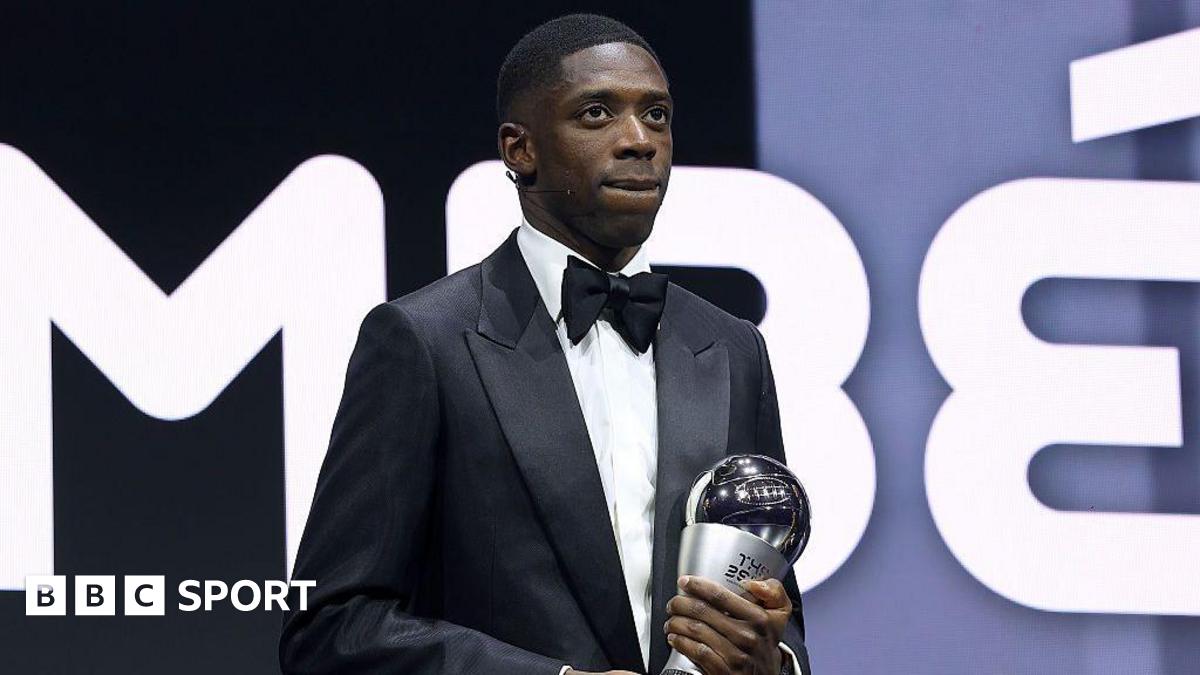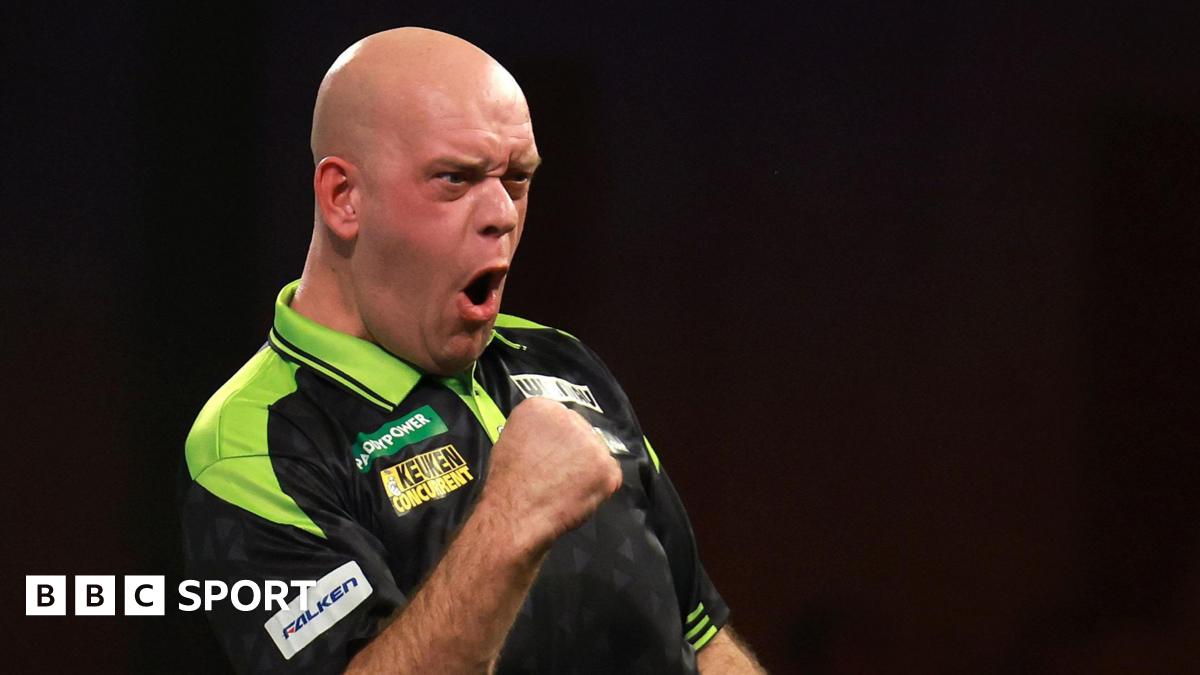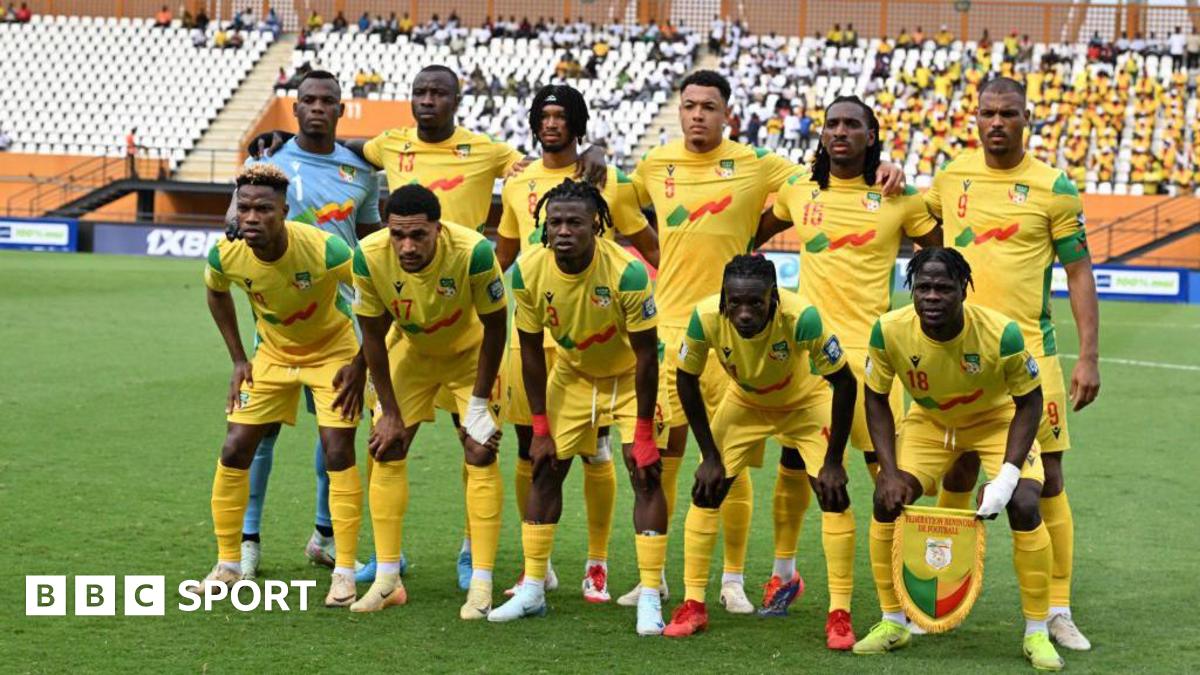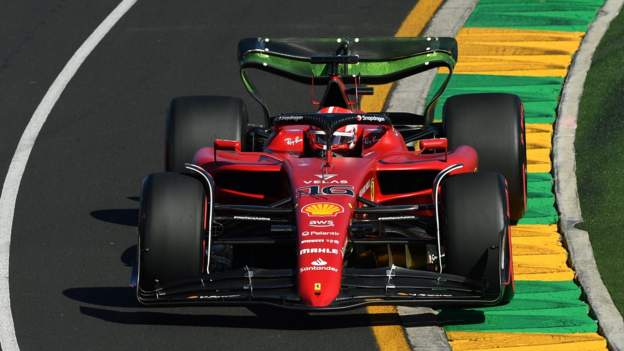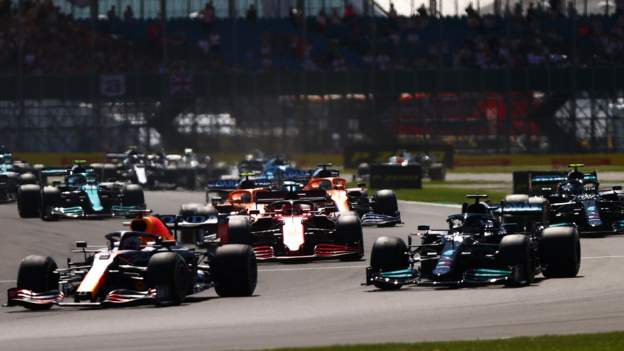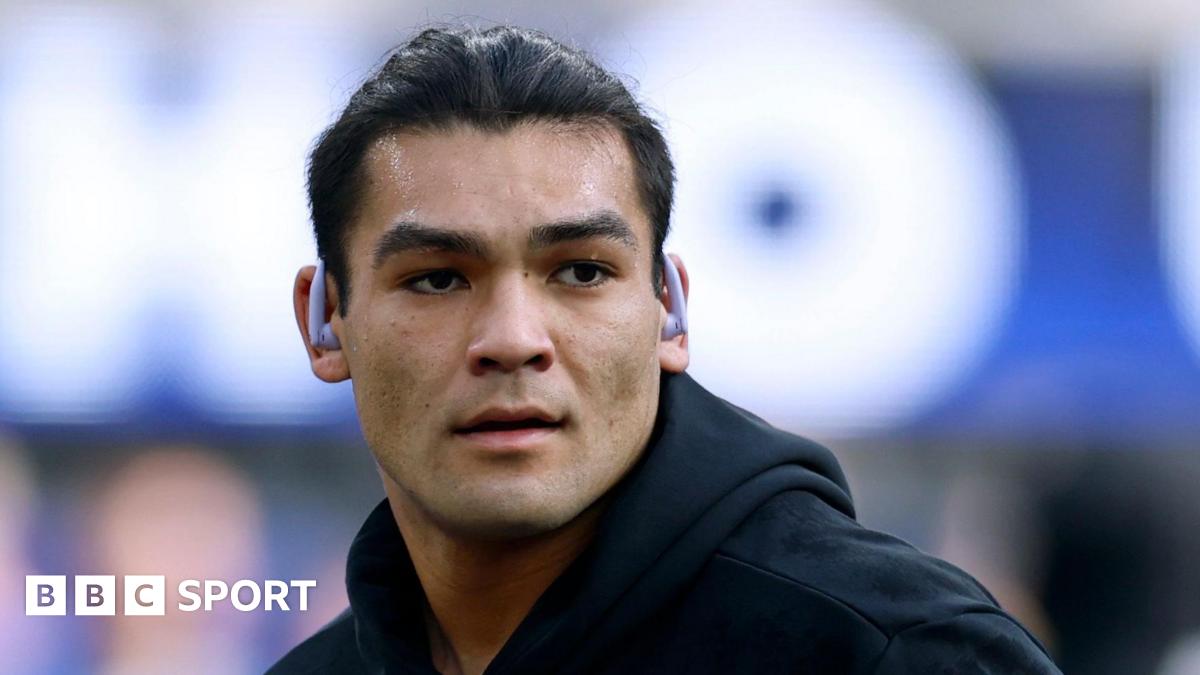Charles Leclerc headed Red Bull’s Max Verstappen in Friday practice at the Australian Grand Prix.
Leclerc ended the session 0.245 seconds ahead of the Dutchman, who appeared to have the potential to go faster had it not been for traffic and some errors.
The second Ferrari of Carlos Sainz was 0.398secs off the pace in third place, ahead of the Fernando Alonso’s Alpine, impressively competitive in fourth.
Mercedes drivers George Russell and Lewis Hamilton were only 11th and 13th.
The seven-time champion said it had been “a difficult session”.
“Nothing we change on the car makes a difference at the moment,” Hamilton said, “so that’s the difficult thing.
“It’s just a tricky car. You’re trying to push and catch and even when you do a decent lap it’s 1.2 seconds down.”
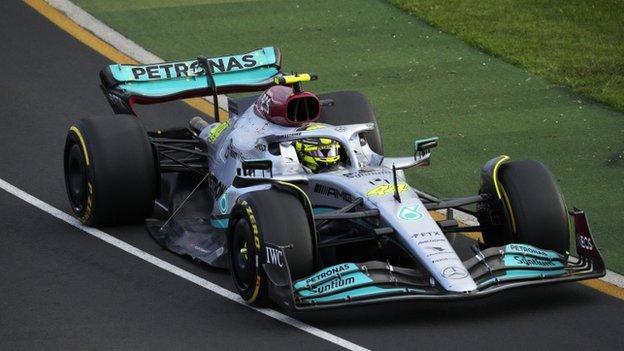
Mercedes lowered the ride height of their car to try to gain performance but this led to further problems with “porpoising”. This is a high-frequency bouncing on the straights as the airflow under the car is disrupted and which has afflicted the Mercedes since it first hit the track.
“Into Turn Nine it is probably the most severe I have experienced,” Russell said. “We believe that’s the fastest way around the track but maybe it’s not.”
The Mercedes drivers were struggling with a lack of confidence in the car in high-speed corners, with their biggest time loss in the 155mph sweeps of Turns Nine and 10, where the rear end felt nervous.
Verstappen complained of a lack of front grip early in the day but improved the car towards the end of running.
“P1 and beginning of P2 we were lacking a bit of balance,” the world champion said. “For the final run, we changed the car around a bit and I felt a lot happier.
“We are a tiny bit off Ferrari but I do think we can make it a little bit closer. But in the long run everything felt quite stable and quite nice so I am happy about that. We have little bit of work to do but we are more or less there.”
Leclerc underlined that he believed Red Bull had more potential than they had showed.
“They didn’t put the lap together,” Leclerc said. “Max had a bit of traffic in his fast lap so it is going to be very close and we will have to maximise our car to be starting on pole on Sunday.”
Ferrari, too, were suffering from porpoising, but not to the same detrimental effect on performance as Mercedes.
“It is not so pleasant but we are working on it,” Leclerc said. “For now it is not too much of a limitation lap-time wise. It is just for the comfort in the straights. It is not so comfortable but I’m not here to have a comfortable car I am here to have a fast car. For now, it’s looking good.”
As at the last race in Jeddah, Red Bull are running their car in lower-drag configuration than Ferrari. The Ferrari gains a lot of lap time in the corners which the Red Bull compensates for with straight-line speed.
For example, on their fastest laps, Leclerc was 0.4secs faster than Verstappen in Turn 13 alone, but the Dutchman gained 0.35secs on the flat-out run from Turn Six to Nine.
Red Bull’s Sergio Perez was fifth ahead of the second Alpine of Esteban Ocon, Alfa Romeo’s Valtteri Bottas, McLaren’s Lando Norris, Alpha Tauri’s Pierre Gasly and the second McLaren of Daniel Ricciardo.
Verstappen looked like he had the potential to displace the Ferraris at the top of the timesheets, but encountered traffic on one fast lap and then made a mistake three corners from the end of another when he appeared on target to go fastest.
There was a brief red-flag period towards the end of the session after a piece of bodywork detached itself from Lance Stroll’s Aston Martin and had to be retrieved by a marshal.
Stroll’s team-mate Sebastian Vettel did not run in the second session after an engine failure towards the end of the first. The team had planned to change the power-unit but failed to do so in time for the German to return to the track.
Melbourne’s Albert Park track has been modified for F1’s return to Australia after a two-year absence because of the pandemic.
A chicane has been removed and some of the corners reprofiled in an attempt to make the racing more exciting on a circuit that is renowned for the difficulty of overtaking.
But there were no major incidents during the session, although a number of drivers ran off-track and Verstappen was one of those who had a couple of near misses with traffic. The Dutchman suffered particularly on his qualifying simulation run when he had to back out of a fast lap at the 155mph Turns Nine and 10 when cars were running slowly on the racing line ahead of him.
Alonso’s Alpine is fitted with a new engine for this weekend – his third of the season when only three are allowed for the whole championship.
Alpine discovered a problem with Alonso’s engine after the first race in Bahrain and fitted a new one for the second race in Saudi Arabia. That suffered a water-pump failure which caused irreparable damage to the internal combustion engine.
Alonso’s problems mean he will inevitably face grid penalties later in the year for using more than the permitted number of power-unit elements.



